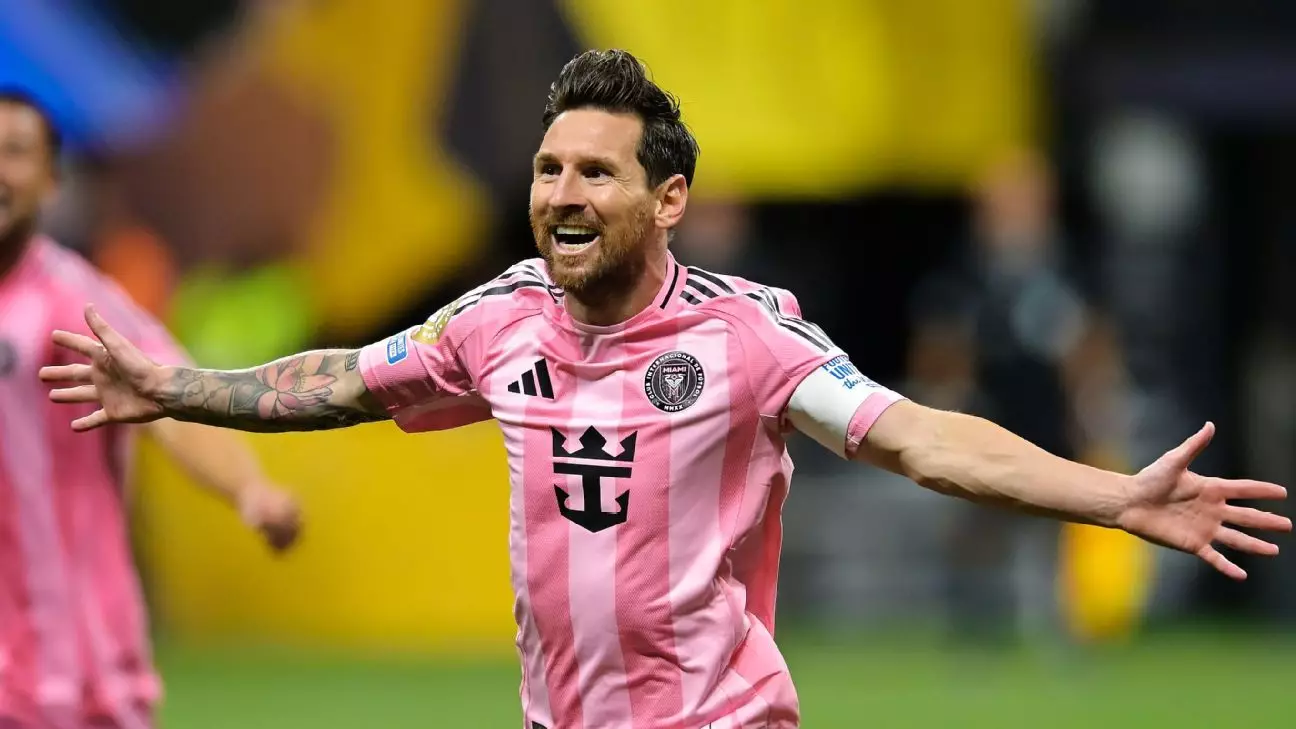Lionel Messi’s move to Major League Soccer (MLS) has not just been a game-changer for Inter Miami; it has also created a seismic shift in the financial landscape of American soccer. As revealed in the latest salary data from the MLS Players Association, Messi continues to hold the title of the highest-paid player with a staggering guaranteed compensation of $20.45 million. This marks his second consecutive year at the top, reinforcing his unmatched position in the league as both a player and a brand.
The figures only reflect the guaranteed portion of his compensation, blurring the lines even further between sport and business. With a lucrative endorsement deal with Adidas and a unique revenue-sharing agreement with Apple—MLG’s broadcasting partner—Messi’s financial earnings are projected to balloon, potentially reaching $150 million throughout his two-and-a-half-year contract. His ability to leverage his immense popularity into various revenue streams places him in a class few can fathom.
The Ripple Effect on Salaries and Team Spending
Messi’s presence has undeniably elevated the financial stakes throughout the league. For instance, Toronto FC’s Lorenzo Insigne follows as the second-highest-paid player, pocketing $15.44 million, a marked contrast to the compensation that Messi commands. The disparity exemplifies the economic challenge that other franchises face in matching the allure and drawing power of a superstar of Messi’s caliber.
Inter Miami contributes a total of $46.84 million in guaranteed compensation, dwarfing all other teams and setting a new record in the process. Miami’s payroll alone surpasses that of every team except for a select few, illustrating how Messi’s signing has transformed Miami into a beacon for talent in the MLS. This staggering sum starkly contrasts with the lowest spender, CF Montréal, which trails far behind with $11.99 million. It makes clear that the financial anthem of soccer in the United States has changed; teams choose between competing at a higher financial level or falling into irrelevance.
The Economic Ecosystem of MLS
The league’s ecosystem is witnessing a remarkable evolution as higher salaries attract and retain an increasing number of elite players. The latest report indicates that 131 players in the league are earning at least $1 million in guaranteed compensation, which is a significant increase from the previous year’s 115. This number, combined with the average salary increase of approximately 9.22%, demonstrates growth that should not be understated. The median salary has also seen a healthy rise to $339,876, suggesting that the financial fruits of Messi’s signing are spreading across the league.
The ongoing fifth-year stretch of the Collective Bargaining Agreement (CBA), which runs until the end of the 2027 season, provides a stable framework for this growth. In this transformative climate, both players and MLS are working in tandem, capitalizing on the momentum generated by superstars like Messi to ensure that profit and player welfare remain a shared priority.
Implications for Backward Teams
While the glamour of high spending encapsulated by teams like Inter Miami resonates through conversations about growth, it also sets a daunting standard for teams that find themselves at the financial fringe. Teams with lower total payroll, such as the Philadelphia Union and Real Salt Lake, face challenges in not only attracting talent but also in maintaining relevance in a league increasingly favored by superstars. The widening financial gap threatens to create a tiered league where a select few teams can hoard talent, essentially monopolizing championship competitions.
This inequality requires an urgent response from the league and its stakeholders. As Messi’s influence grows, the league must find ways to prevent a two-tiered system from emerging—one where elite players gravitate toward high-spending teams, leaving others to fight for scraps. It opens the doors for discussions surrounding salary caps, revenue sharing, and collective investment strategies aimed at leveling the playing field.
Products of this new landscape, ignited by Messi’s presence, could point towards an imminent renaissance for American soccer, infusing more excitement and competitiveness. In a way, Messi not only inspires players on the field; he could very well reshape the financial foundation of the entire league, steering it toward unprecedented heights.


Leave a Reply